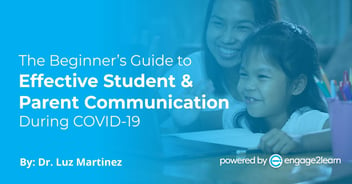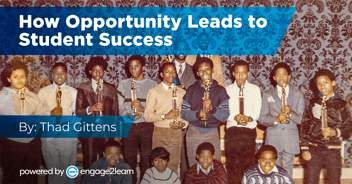Engaging All Learners | engage2learn
You know those students who sit in the back row of the classroom and are usually either asleep or otherwise oblivious to what is going on around them? The ones who avoid the front row like the plague? The ones who barely pass each class not necessarily because they deserve to, but because the teacher no longer wants to deal with them? We all know at least one of those students.
On the other hand, there are the “front of the class” types of students. They raise their hand to every question, to the point where the teacher has to remind them to give someone else a turn. They have their homework done the night it is assigned. They dread group work because they know that they will most likely be doing all of the work.
But does it seem fair that Back of the Class Billy will get an “A” based on the efforts of “front row” students and not from his own efforts?
Click To TweetHow can we bridge the gap between these types of learners? In the same way “one size fits all” clothing doesn’t work for everyone, neither does a “one size fits all” approach to learning. We have to find a way to connect with each learner on an individual level and not make assumptions.
We all have individual strengths and weaknesses and that is what makes a collaborative class full of students so dynamic; each one brings unique talents to the team.
Unfortunately “back row” students are never taught to engage with others in a traditional classroom. Because these students are held to the same standards as the “front of the class” learners, they never realize that they are smart and they do have something unique to offer.
Thankfully, modern student-oriented learning is here to help all people learn, no matter where they sit in the classroom. This is a type of learning in which learners all actively participate and each actually earn their grades. A type of learning where everyone sits on the “front row.”
And the good news is, this type of learning even causes those students in the back of the class to want to participate, to want to come to school, and to want to learn. Differentiated instruction, combined with active learning, can unlock the passion and potential of each and every learner in the classroom.
Imagine a classroom in which each individual, regardless of their background or learning ability, is able to learn effectively and as a result, grow exponentially in both knowledge and character. The sense of accomplishment that those disengaged learners can gain from being a part of the class rather than a part of the back wall is priceless.



